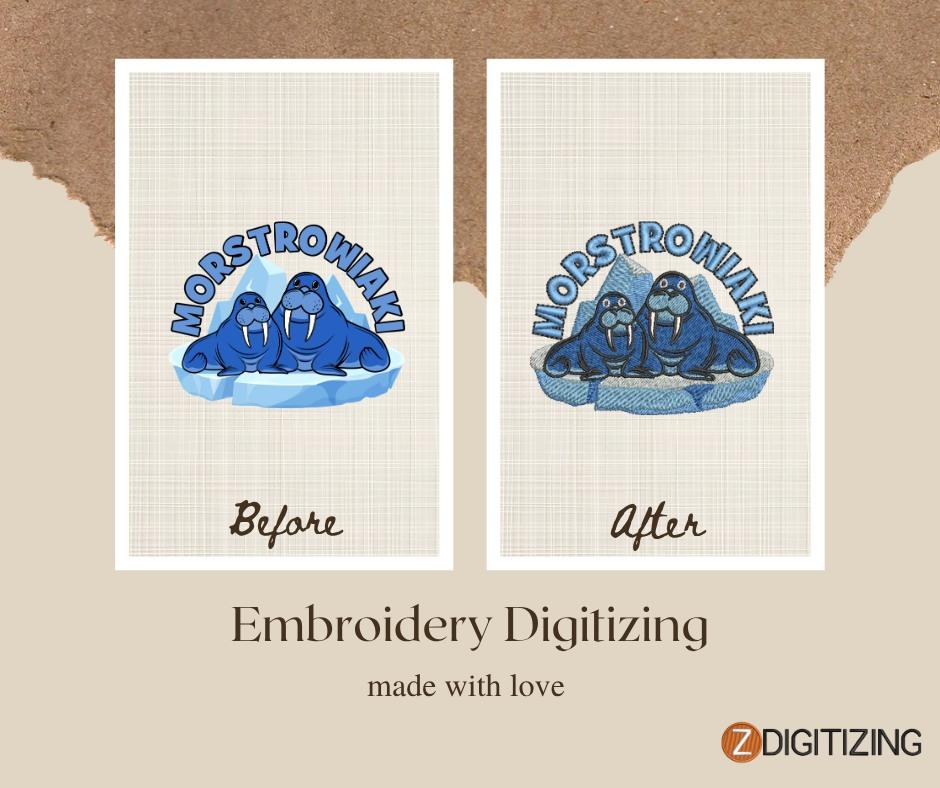Why Embroidery Digitizing is the Key to Professional-Grade Apparel

When you see a crisp, clean embroidered logo on a piece of apparel, it signals quality. The lines are sharp, the colors are solid, and the fabric lies flat. Conversely, a poorly executed design, one that is puckered, distorted, or has gaps in the stitching, can cheapen the look of a garment instantly. The difference between these two outcomes rarely comes down to the embroidery machine; it comes down to the quality of the digital file that guides it.
That file is the product of embroidery digitizing, a critical technical process that serves as the blueprint for every stitch. Understanding how this process works is essential for any business or individual aiming for professional-grade results.
More Than a File Conversion: The Role of the Digitizer
Embroidery digitizing is the manual process of converting a graphic design file into a set of instructions that an embroidery machine can understand. It is not an automated, one-click conversion. A skilled technician, or digitizer, uses specialized software to meticulously recreate the artwork stitch by stitch.
This technician acts as an interpreter between the visual language of your design and the physical reality of thread and fabric. They make critical judgments that software alone cannot, planning the stitch types, directions, and sequence to ensure the final product is a faithful and durable representation of the original design.
How Professional Digitizers Solve Common Embroidery Problems
The expertise of a digitizer is best understood by looking at the physical challenges of embroidery that they are trained to solve. A quality digitized file has the solutions to these common problems built directly into its code.
- Solving Fabric Distortion and Puckering: Fabric naturally bunches and pulls as thousands of stitches are applied. A digitizer counteracts this by building a foundation of underlay stitches that stabilize the material. They also apply pull compensation, strategically making parts of the design slightly wider in the file so that when the thread pulls the fabric inward, the final shape is accurate and sharp.
- Ensuring Detail Clarity and Correct Texture: A design with small text and intricate details requires precision. The digitizer selects the appropriate stitch types and density for each element. They use smooth satin stitches for borders, patterned tatami stitches for larger fields of color, and fine running stitches for thin lines, ensuring no detail is lost and the design doesn't become a stiff, dense patch.
- Creating an Efficient and Clean Sew-Out: A professionally digitized file is designed for production efficiency. The digitizer plans the optimal stitch pathing, which is the sequence and direction the machine will sew. This minimizes the number of trims and "jump stitches" (long threads across the design), resulting in a cleaner final product and reduced run time on the machine.
Getting the Best Results: What to Provide Your Digitizer
To ensure a smooth process and a superior outcome, you can help your digitizer by providing the right information upfront.
First, submit the highest quality artwork possible. A vector file (like an AI, EPS, or SVG) is ideal because it can be scaled without losing clarity. If you only have a raster file (like a JPG or PNG), provide the largest and highest-resolution version you have.
Second, specify the fabric or material the design will be stitched on. A file digitized for a stable cotton twill cap will not work well on a stretchy knit polo or a thick fleece jacket. Each requires different settings.
Finally, know the final size of the design. An embroidery file cannot be scaled up or down like a graphic file without compromising its integrity. A design digitized to be three inches wide will need to be completely re-digitized to be six inches wide.
Conclusion: A Foundation for Quality
Embroidery digitizing is a technical craft that is fundamental to the quality of any stitched product. It is an investment in consistency, durability, and the professional appearance of your brand. By appreciating the skill involved and working with experienced professionals like ZDigitizing, you ensure your design concept is translated perfectly into a physical product you can be proud of.






